There are many manual lenses above 28mm which work quite well on modern cameras like the Alpha 7 but not that many wide angle lenses perform good enough on modern cameras.
The Canon nFD 2.8/24 is one of the sharpest, affordable wide angle lenses and I think it can be a good solution for budget-oriented Sony Alpha 7 users.
A German version of this review can be found on phillipreeve.de.
Sample Images
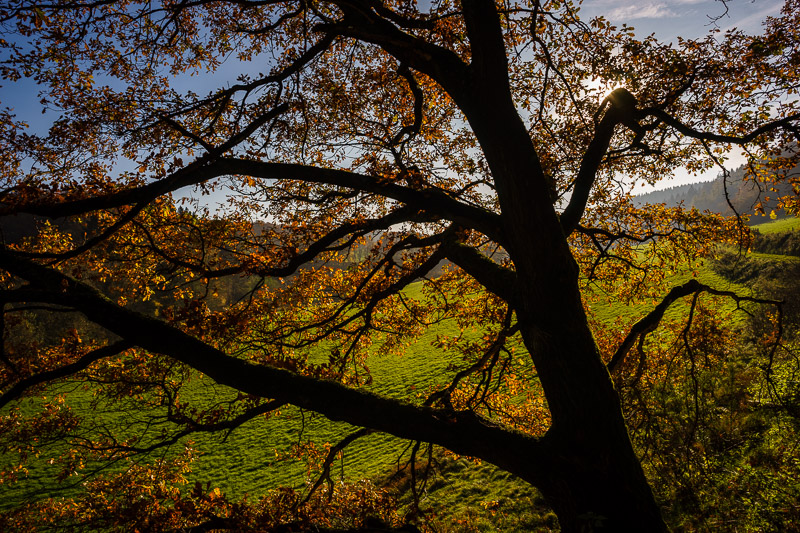

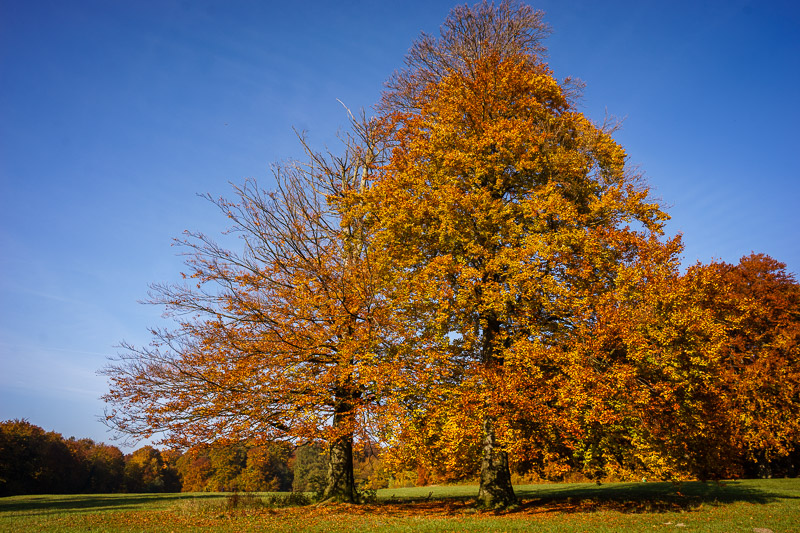
Specifications
-
- Diameter: 62mm
- Length: 45mm
- Filter Diameter: 52mm
- Weight: 240g
- Number of Aperture Blades: 6 (slightly curved)
- Elements/Groups: 10/9
- Mount: Canon FD
The Canon new FD usually sells for around $85 at ebay.com (affiliate link).
In Germany you can buy it for around 60€ at ebay.de (affiliate link).
Versions
Canon made three different 2.8/24 FD lenses.
- The Canon FD 24mm 1:2.8 chrome nose was introduced in 1971 and is heavy at 410g. It has the less effective S.C. coating.
- The Canon FD 24mm 1:2.8 S.S.C. was introduced in 1973, it is very well build and a bit hefty at 330g.
- The Canon (new) FD 24mm 1:2.8 introduced in 1979 has the new mounting system and it isn’t built as solid but at 240g it is notably lighter. This review is about this version.
The FD S.S.C. and new FD feature a floating focusing design but the nFD version has one more element.
Canon also made a very big and very expensive FD 1.4/24 L as well as an FD 2/24 which is quite expensive too.
Compatibility
You can use the lens on a wide range of old Canon FD-mount film-cameras like the Canon A1 or AE-1.
Because of the flange focal distance of Canon FD lenses, all adapters for DSLR cameras either contain an optical element which will reduce image quality a lot or cause you to lose infinity focus. I wouldn’t bother to use one of those adapters.
Mirrorless cameras have a much shorter flange focal distance and you can buy adapters for Fuji-X, Sony-E, Micro Four Thirds and Samsung NX which won’t degrade image quality or lose infinity focus.
I usually recommend Sony Alpha 7-series cameras for use with older manual lenses because they are the only ones with a full frame sensor and in my experience most lenses work best on the larger sensor. In my eyes there is little reason to use this lens on an APS-C camera; 18-55 Kit lenses will give better results.
Here are links to adapters to mount the Canon FD 2.8/24 to Sony E-mount cameras: Amazon.com | Amazon.de (affiliate links).
I use an expensive Novoflex adapter (link to my review) but the cheaper ones usually work well enough.
Build Quality
Build quality is good by today’s standards but if you compare it to other manual lenses the lens feels a bit cheap.
The lens is mostly metal but some parts like the aperture ring at the front plate are made from plastics. All the markings are engraved.
The Canon FD 2.8/24 is a small lens and is very well balanced on my Sony Alpha 7.
The focusing ring travels 90 degrees from 0.3m to 1m and a further 20 or so degrees to infinity. I think that’s a very reasonable focus throw. I would have wished for a little more resistance though; it is a bit too smooth.
The aperture ring has half-stops from f/2.8 to f/22 but it requires too much force to move it and the clicks aren’t distinctive enough so it can be a bit hard to select the right aperture stop just by feel.
All in all operation works well enough but other lenses handle a bit more pleasant.
Lens Hood
I don’t own the original lens hood, its name is “BW-52C”.
Close Focusing Distance
0.3m isn’t very close for a 24mm lens. Thanks to floating elements sharpness doesn’t suffer as you focus closer.
Image Quality
Vignetting
Notable at f/2.8, greatly reduced by f/4 and invisible in practical applications from f/5.6.
Flare Resistance
The flare resistance is actually quite good for a lens of its age. There is a little bit of contrast loss and some ghosting can be provoked but I have seen much worse from other lenses.
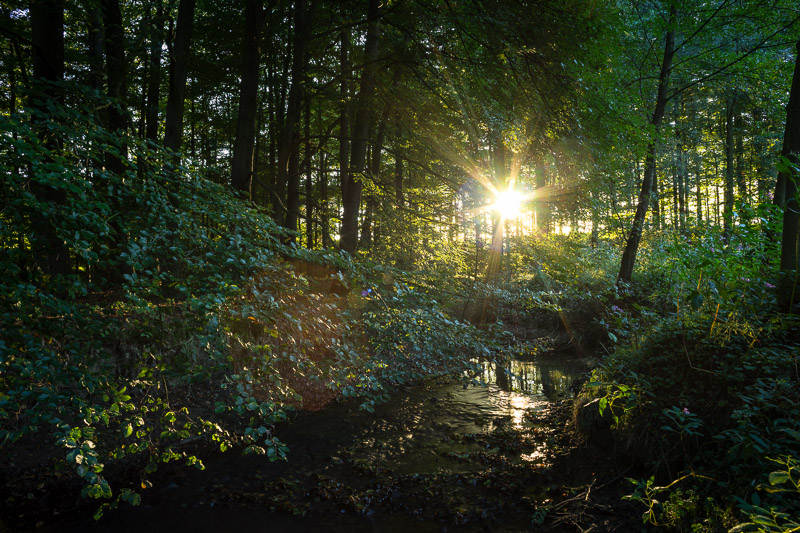
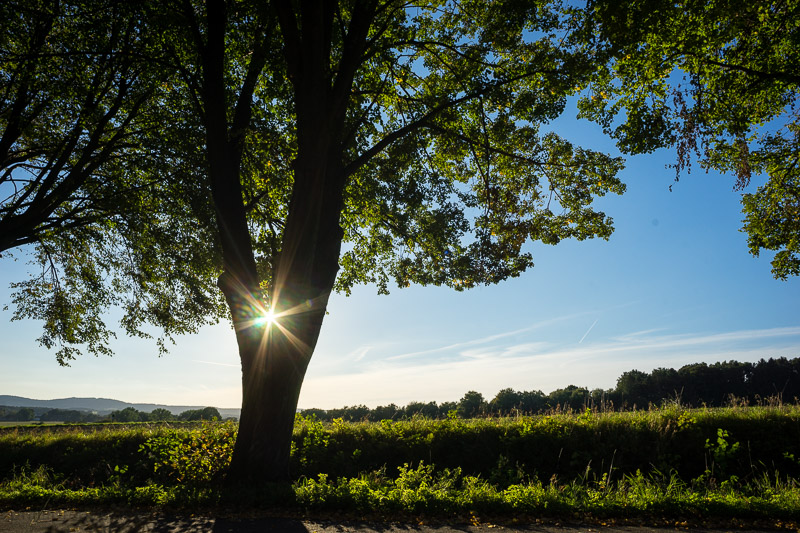
Distortion
There isn’t too much distortion but since it is a mix of barrel- and pincushion-distortion I wasn’t able to fully correct it in LR.
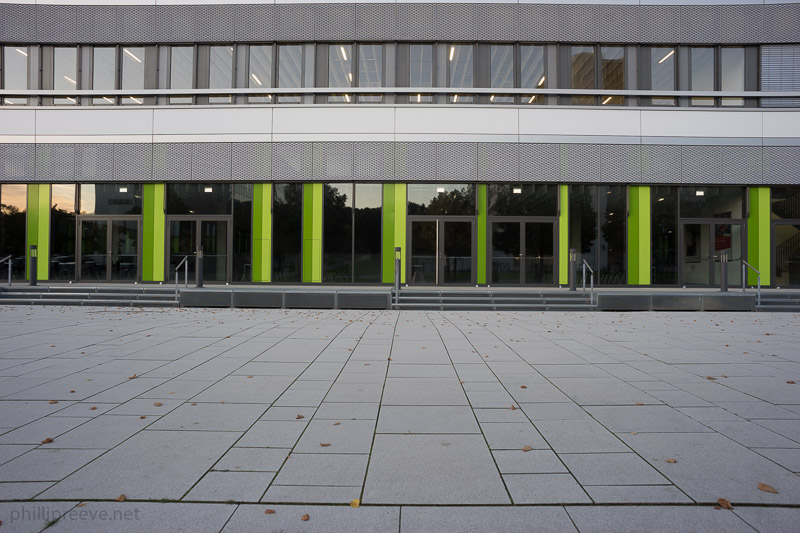
Chromatic Aberations
There is a moderate amount of lateral CA which should be corrected.
I didn’t test for longitudinal CA because it doesn’t really matter in a wide angle lens.
Bokeh
Unsurprisingly bokeh is not a strength of this lens. This is typical for a wide angle lens. Since you won’t use this lens to isolate your subject very often this shouldn’t matter too much.
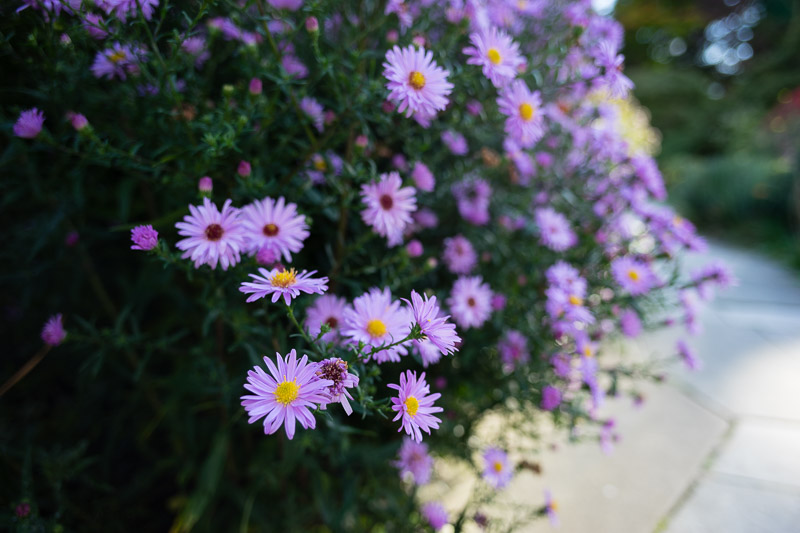
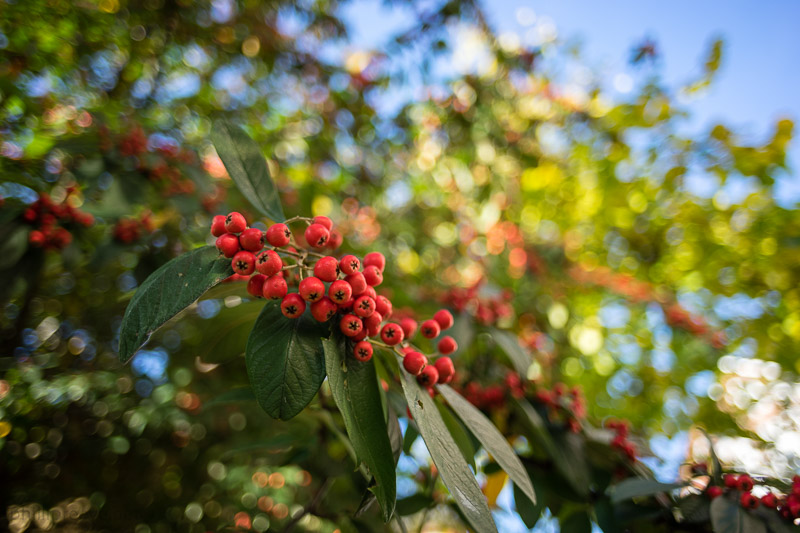
Sun Stars
Not good, not bad. I wish this lens had more aperture blades than just 6.
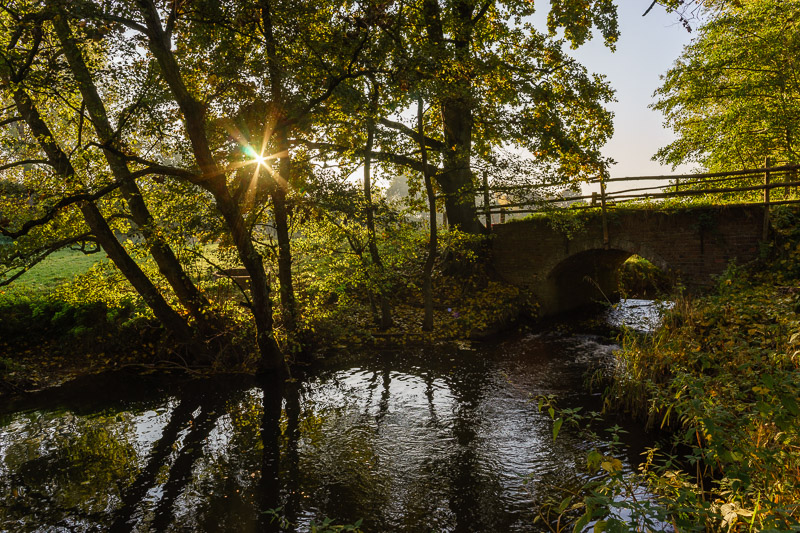
Sharpness
The Canon nFD 2.8/24 is very sharp in the center from f/2.8. Stopping down to f/4 makes the center excellent.
The midframe region is good from f/2.8 but benefits from stopping down to f/4 as well.
The corners show decent resolution at f/2.8 but very low contrast. For very good results it makes sense to stop down to f/8 and they are best at f/11.
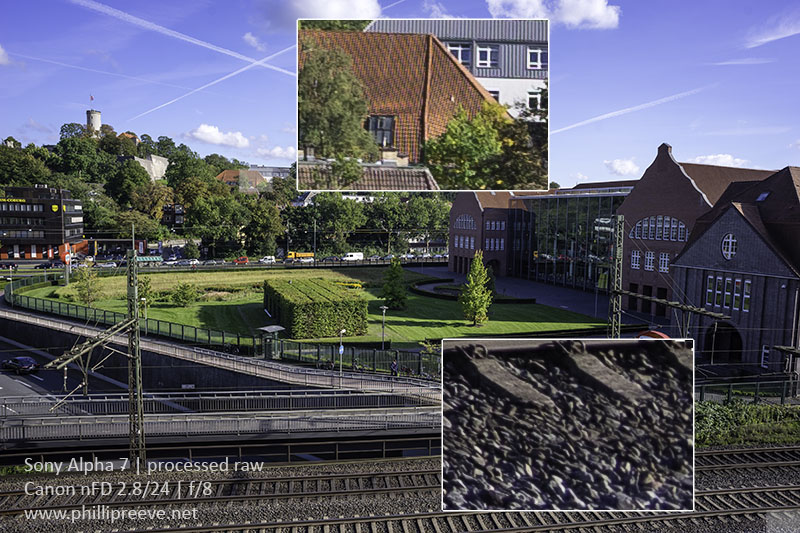
Conclusion
Pros
- Very sharp across the frame from f/8
- Size and weight
- Price
Average
- Flare resistance
- CA
Cons
- Bokeh
- Build quality
- Corner sharpness at wider apertures
The Canon FD 2.8/24 represents what I have come to expect from Canons non-L nFD lenses. Image quality is class-leading (the competition beeing 70s and 80s, 24mm lenses) with very good across-the-frame sharpness from f/8, only the distortion could be a problem for some applications.
Mechanics are okay – the focusing experience is still better than with Sony’s FE lenses but other manual lenses are more pleasant to use.
I think the Canon FD 2.8/24 is a good solution if you are looking for a small and affordable lens for landscape photography. Stopped down to f/8 it is very sharp across the frame. Flare resistance is decent and the small size and low weight are a big bonus for longer hikes.
I wouldn’t recommend this lens for architecture photography because of the distortion. I also wouldn’t recommend it to people who put a lot of value on great build quality and a pleasant focusing ring.
All in all the Canon nFD 2.8/24 is a good solution for photographers on a budget who are focused on the output of their lenses. If your focus is less on the output and more on the experience of using your lens then there are better solutions.
The Canon new FD usually sells for around $85 at ebay.com (affiliate link).
In Germany you can buy it for around 60€ at ebay.de (affiliate link).
If this review was helpful to you, please consider using one of my affiliate links. I will earn a small commission on your purchase and it won’t cost you anything. Thanks!
For the right adapter check out our Adapter Guide.
Full ResolutionSample Images: Canon FD new 2.8/24 on Sony a7
All images are processed in Lightroom from Raw. Many more samples in my Canon nFD 2.8/24 flickr album.
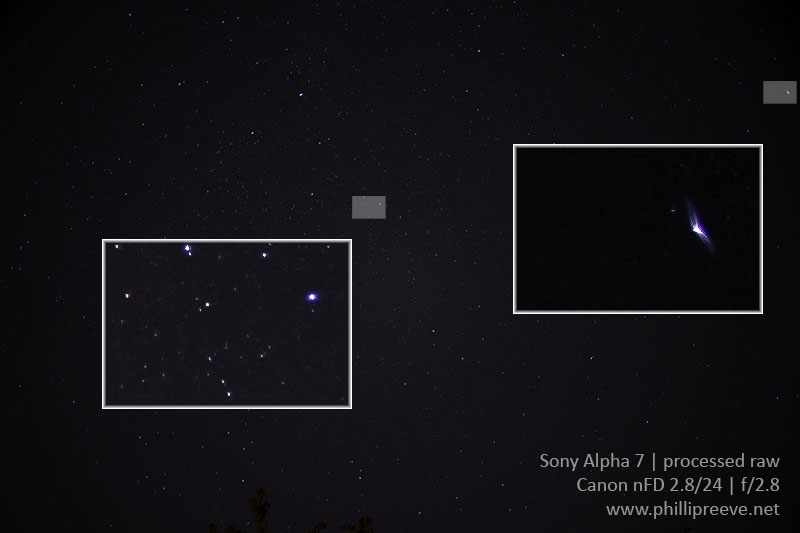
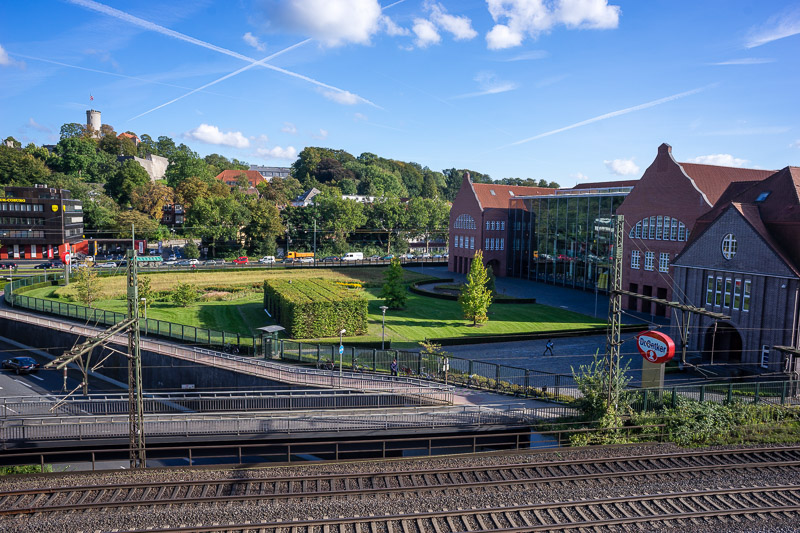
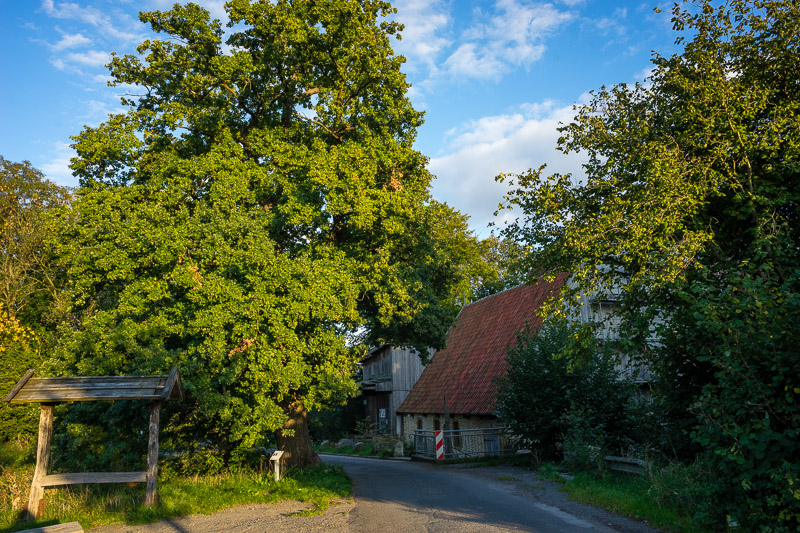
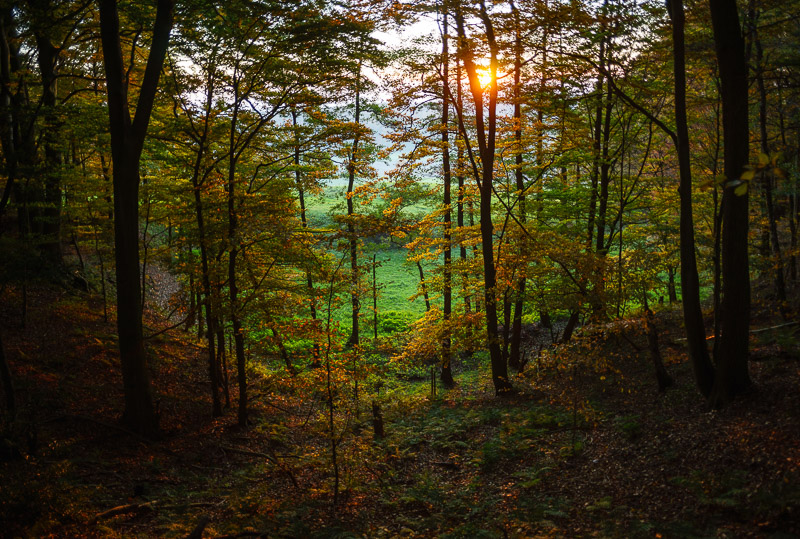
Other Articles
- User-Guide to Canon FD lenses
- My new Facebook page
- Manual lenses on the Sony a7 – a beginner’s guide
- User-Guide to wide-angle lenses for Sony a7 a7ii a7rii
This site contains affiliate links. If you make a purchase using any of the links marked as affiliate links, I may receive a small commission at no additional cost to you. This helps support the creation of future content.
Latest posts by Phillip Reeve (see all)
- Review: Samyang AF 75/1.8 FE - April 12, 2021
- The FE-List now has 113 lenses on it - March 25, 2021
- 2020 – Year’s end review - December 28, 2020
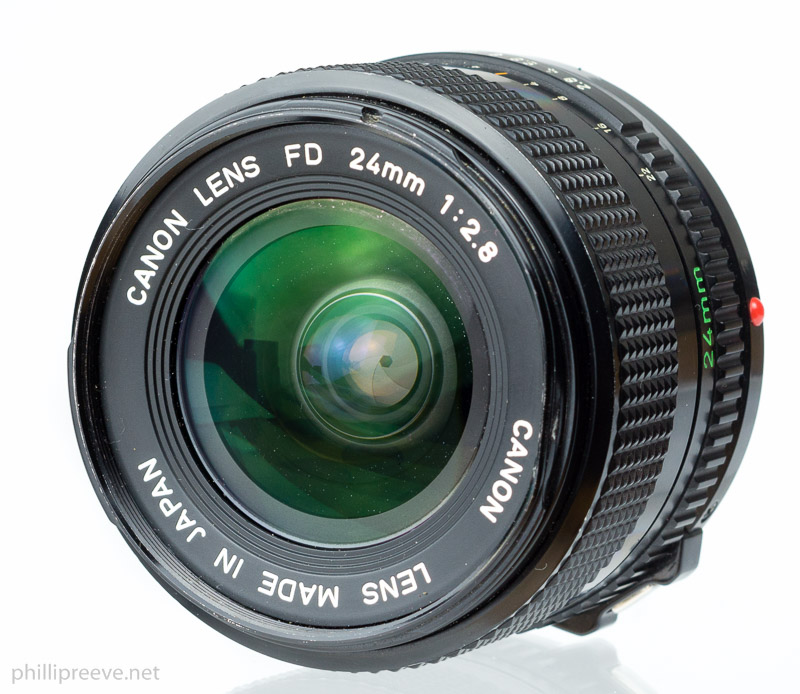
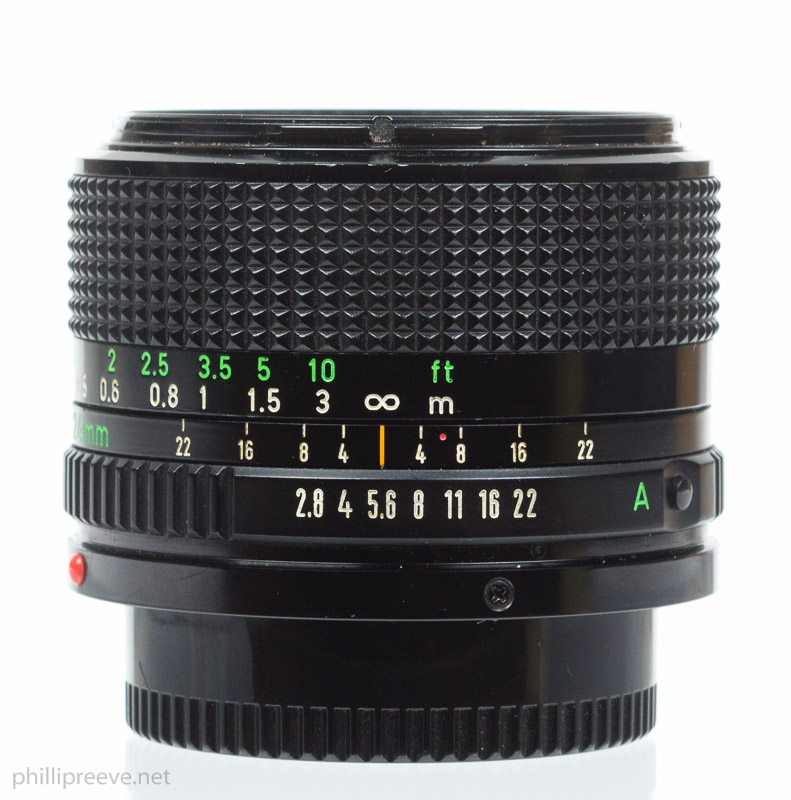
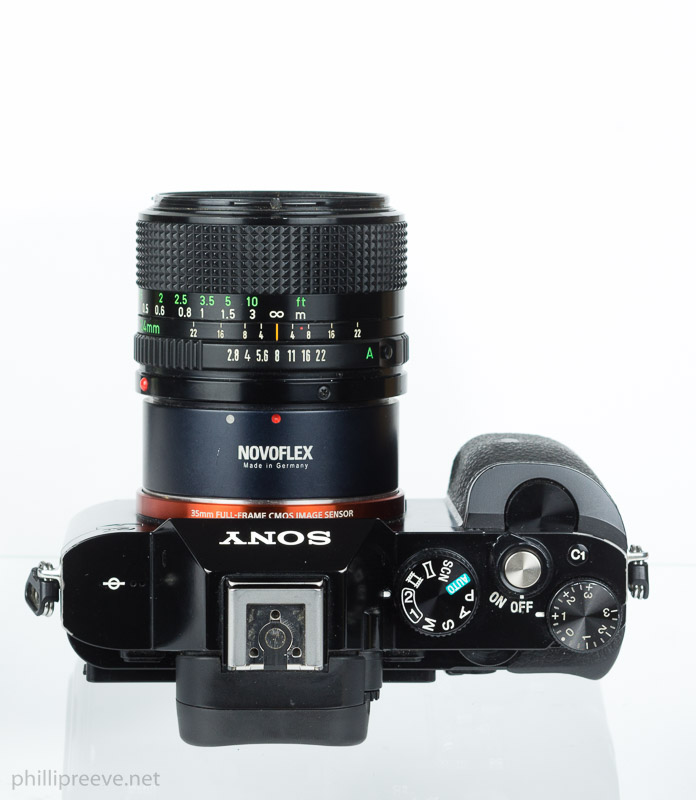

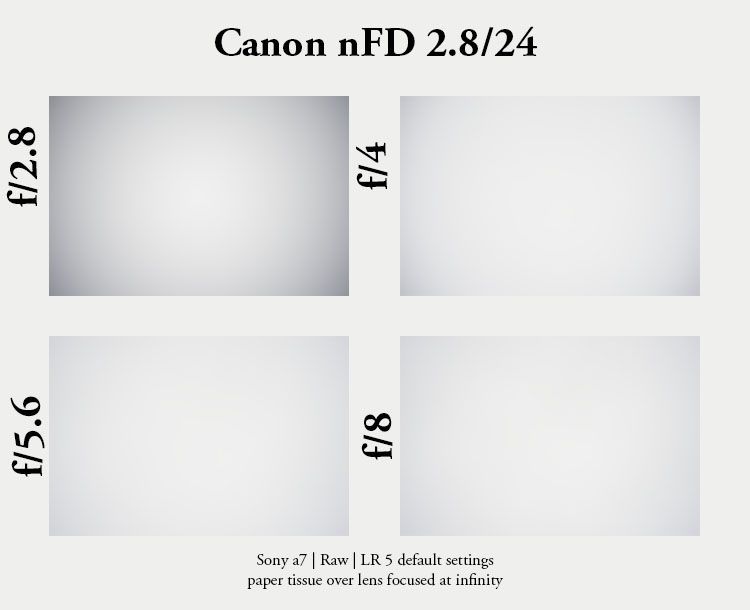
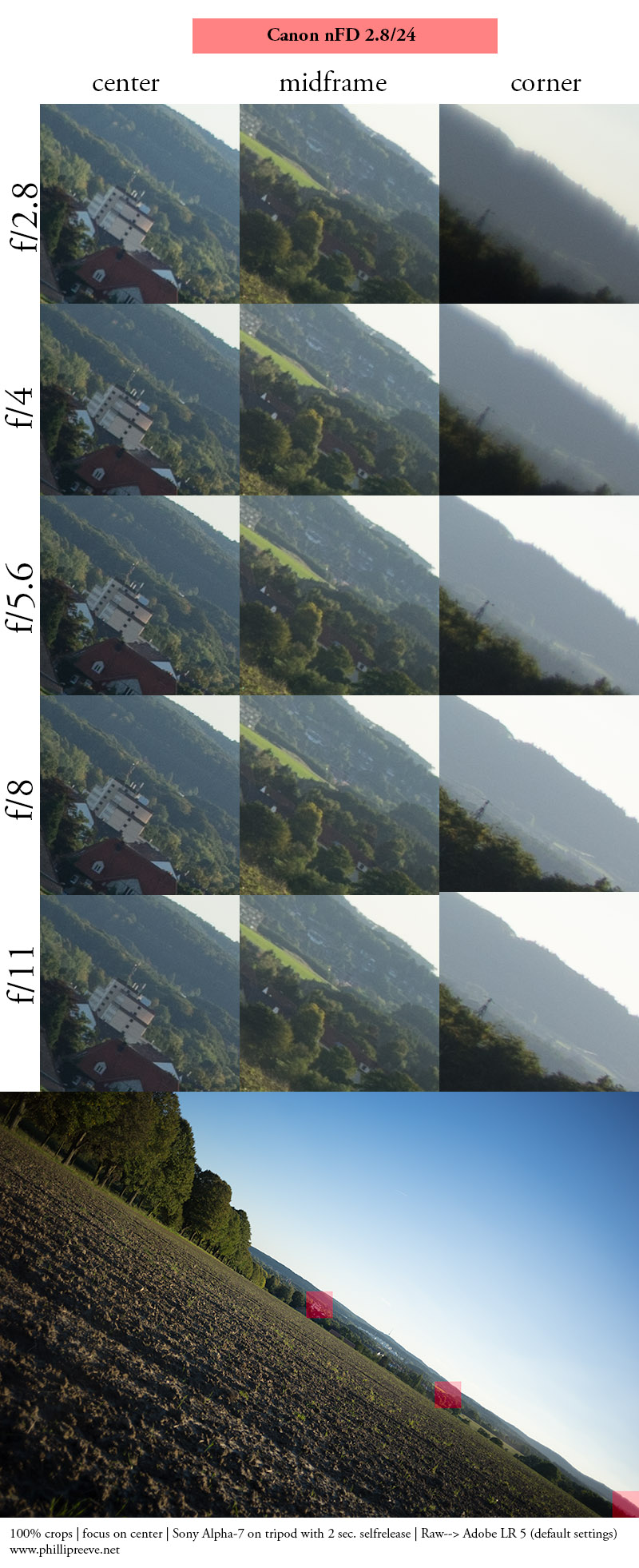
My favorite FD lens.. Great article!
1. The affiliate links show amazon, but they points to ebay.
2. I dont understand “[…] Unsurprisingly bokeh is a strength of this lens […] “. , because you list Bokeh under the Cons.
I think that’s a beautiful bokeh.
thanks for the report! it seems we disagree about the bokeh 😉
Dear Philipp, I just discovered your website. I am so pleased to meet another old lens user with A7.
Your pictures with the 24 2.8 lens are very nice. I must admit I never get such nice pictures especially with sun stars. What is your secret for settings ? as well as night skies ?
Last question: wich lens do you recommend for faces ? I have a 50 1.4 canon fd , pretty happy with it but I wish i can do better with a 85 or 100mm lens. Otherwise prices of 85 1.2 canon are too heavy for my wallet !! if you have another last secret… regards. Laurent.
I don’t think I have any secrets but experience certainly plays an important part. You might want to check out these articles: article 1, article 2 and article 3
Do you look for an FD lens? The FD 2/135 would be a good choice but also the 2/100. My personal affordable favorite is the Minolta MD 2.5/100
Dear Phillip, tank you for your answer. I was on travel and could not reply to yo you sooner. I read many things about the minolta md 2.5 100. it is hard to find on the second hand market actually…What do you think also of the canon FD 1.8 85mm in comparison with the minolta ? I read your dedicated page for the 85mm lens. congratulations for your website. regards. Laurent.
I have no personal experience with the FD 1.8/85. But from what I have read it is a good performer. I don’t think that it is that sharp wide open but still sharp enough for most applications.
Englisch ist und bleibt wohl nicht meine Sprache erster Wahl. Ich geb mir zwar Mühe, aber in diesem Fall ist es für mich zu kompliziert. : -)
Du hattest ein “not” vergessen, was mich irritiert hat. Ich habe in der Tat aber schon schlimmere Bokehs gesehen. Ist halt etwas swirly und unruhig, aber im Ganzen find ich es nicht so schlimm.
es gibt Fälle wo ich merke, dass die Leute sich mit Englisch nicht wohl fühlen, dein Post gehörte aber nicht dazu 🙂
Das Bokeh geht für ein WW in Ordnung, mehr aber auch nicht
Danke, ich benutze teilweise auch den Google Translator. Wenns aber speziell wird, dann hilft der auch nichts.
Werd ab jetzt wieder englisch schreiben. Muss ja nicht perfekt sein. 🙂
ist meins auch nicht und so können alle die Kommentare nachvollziehen 😉
I really enjoy your reviews Phillip. Seems very similar to the Olympus OM Zuiko 24mm f/2.8 which I use quite a bit. I’ve been considering trying to pick up something even wider, but just don’t quite know which direction to go.
Have you compared against the Minolta MD 24mm F2.8?
I think it holds up pretty well, but is more expensive and people tend to complain about field curvature?
The are two optically different versions of the MD 2.8/24. I have tested the older and bigger MD Rokkor with 55mm filter thread and I think it is clearly less sharp than the Canon, built quality is nicer though. And then there is the MD version without the Rokkor name tag and with 49mm filter thread. I haven’t used that personally but going by other user test it seems to be as good as the canon optically.
Ich kann deine Erfahrungen 1:1 bestätigen, es war ein gutes und kompaktes Weitwinkel für Landschaftsaufnahmen an der A7.
Hast du deines wegen dem FE 4/16-35 verkauft?
Have you sold your copy because of the FE 4/16-35?
Yes, that was the reason. I must admit, that I liked the handling of the manual lens more for landscape purposes.
Therefore I preordered the Loxia 21mm f/2.8 now, that will probably replace the FE 16-35mm f/4.
I guess for me the Loxia could replace the 16-35 as well, I don’t really need the whole zoom range. But I would miss the image stabilizer. The much nicer handling, better built quality and smaller size as well as the faster aperture are tempting.
I think both lenses could have a place in my bag – i just can’t afford it. Sometimes, the FE 16-35mm impresses me, sometimes it leaves me with mixed feelings. For example when I forget about the field curvature and use the autofocus or when I forget to turn off the stabiliser. I can’t blame the lens for it but maybe it’s just not my style of shooting then.
One more observation: I tend to use 16mm and 35mm most of the time. That indicates, that I am to lazy to choose the desired focal length wisely. In review of my last journey, the 16mm turned often out to be too wide, I had to crop the image then.
When I look where I came from (FD 24mm f/2.8 for example), the invest in the Loxia is far bigger than in my whole manual lens portfolio. I hope it can hold up to the glorious first impression reviews by the Zeiss-sponsored photographers.
Very similar findings to mine Phillip. A very good lens, but with negatives for handling, i.e., v. tight aperture ring and “slop” in focus. (really shows in direction change in magnified view, even with mint, little used copy)
Also, in my comparisons with several 24mms, the nFD showed a yellowish cast that wasn’t flattering! (I probably would never have noticed it but for the direct comparison.) In it’s favour, the nFD showed the best depth of field of the lot, compared at each aperture, making it very good for landscapes.
Eventually though, I preferred the MD 24/2.8 (ø49mm) and the OM 24/2.8
@ Dan Hawk
Looking for something wider, you may consider a Olympus Zuiko 21mm f3.5, very small and sharp, but has the dreaded red ring flare depending on the position of a strong light source in the frame. See here: http://www.stefanrohloff.de/20_olyspecial.php?en=1
Or the Minolta 21mm f2.8, which was tested by Philip too, if I remember well. Needs to be stopped down for good corner sharpness, but the mechanics are excellent.
I own both, but I prefer the Oly’s low weight for landscape photography and the Minolta for focus transition when filming.
Hi Phillip,
es gibt insg. 3 Varianten:
1. Canon FD 24mm 1:2.8 (Chromenase)
2. Canon FD 24mm 1:2.8 S.S.C.
3. Canon nFD 24mm 1:2.8
Grüße
Danke für den Hinweis! Kann man zur Chromenase irgendwo mehr erfahren?
Technische Details gibts hier:
http://www.canon.com/c-museum/en/product/fd133.html
und ein Bildchen hier:
http://www.fou-du-canon-f-1.net/wp-content/uploads/2015/07/FD-24mm.28.2.jpg
danke, ist ergänzt 🙂
gerne 🙂
I’ve been using many Canon FD lenses and I love them very much.
I also use them for making films. You can see a review in these shorts :
https://vimeo.com/35591674
https://vimeo.com/58343386
Thanks for sharing your review.
Have you had the chance to compare this lens to the Sigma Ultra Wide II 24mm/f2.8? I remember you were using the Sigma some months ago…
Cheers
Haven’t used that one in a while. The sigma handles flare pretty badly and build quality is rather bad. But it focuses much closer and i would guess that it is no less sharp
I had bought a Canon nFD 24mm f2.8 on the bay but my wife offered me a Minolta MD Rokkor 24mm f2.8 for my birthday, so I need to keep the MD and sell the Canon (I had just bought a Hoya HD UV filter 52mm…). Canon great optical state but focusing ring a bit loose as stated above.
Having now tried the Minolta MD 24mm, it is much higher quality standard than the nFD Canon in everything mechanical (focusing ring so precise and smooth, aperture ring, metal…) aspect and pleasure of use… no contest. However, I am not the right person to assess the optical quality (which may also vary with each lens as opinions seem to be quite diverse) .
Also I spent the week end in Paris and only took with me a newly acquired Rokkor 20mm f 2.8 (it cost me only 130$, so could not resist despite your assessment) and a 85 mm f 2.0 as I could walk with my A6000 around the neck and a lens in the pocket (both very light and compact). This gave me eq focal lens 30mm and 128mm and gave me beautiful pictures (without assessing optical quality).
A major advantage I found with digital versus film photos now that I have acquired a proper camera is the high sensitivity who delivers beautiful night shots. The wide range also gives great flexibility for aperture choice
Hello
Wich lens you recomend at 20mm or less for landscapes and night photografy?? Manual and cheap like this.
thanks!!!
No classic 20mm or less which will perform well for night sky photography, because they all need to be stopped down a lot to perform well. I would go for the Samyang 2.8/14.
I have the Samyang in my Nikon fx. Is good but too much distorsion, and for this loss To take a lot pictures.
Thankss for your anwers
Is good for night photograpy? Milky way?long expositions? Thankss!!
check out the sample picture of the night sky, I wouldn’t be happy with it for night sky photography
Hi Phillip !
I feel quite desoriented when choosing between this lens, the Canon FD 24mm F/2.8 and the Contax Zeiss Distagon T 25mm F/2.8 to mount on my A7RII. You had both lenses so which one would you recommend ? Architecture and landscape photography are my purposes, including interiors / design photography. I already own the amazing Batis 18mm, which does 75% of the job, but I need a 24/25mm to complete and unfortunately can’t afford the Batis 25mm yet. Any advice from you very welcome! Greetings, Emmanuel
I have no experience with the Distagon 2.8/25, sorry.
oh, all right. I thought so. Sorry for that. Thanks anyway for your great reviews. It helps a lot ! 🙂
Phillip
I would really appreciate if you could recommend me a wide angle for use in interiors and portraits (lifestyle)
I have a sony alpha 7 II and already I spend a lot of money on zeiss 35mm 1.4.
But for small spaces I need a wider lens. Thanks for your help
Voigtlander 1.8/21 maybe?
Damn that distortion is ugly. Considering that I want to use my wide-angle lens for architectural stuff as well, I should probably pass on this one. :/
If you have lightroom try the modern lens correction profile EF 24mm f/2.8 IS USM as a foundation and adjust distortion and vignette as required.
Don’t know whether you’re still doing vintage reviews but the Canon new FD 28mm 1:2.8 might be worth checking out. It seems that it’s the only FD without mustache distortion:
http://erphotoreview.com/wordpress/?p=4193
Recently I have had less time and too many E-mount lenses to test. I own the nFD 2.8/28 but it is not high on my priority list but so far it seems to be a solid performer.
It is bad you dont have time to do old lens test any more.
There is a lot of FE mount test out there…
But the hole point with this site was the old lenses and your beautiful photos taken with them. I hope you will find time to start testing all those Konica, Yashica, Olympus etc.etc. soon again. Otherwise this site will be like all others out there…Expensive lenses not for normal people…
I still have several affordable lenses on my shelf and I have not stopped reviewing affordable lenses but I do it at a slower pace now. I also feel that I have covered many of the more interesting ones and I find it harder to find interesting new lenses.
Sounds good to me…:):)
One interested thing about legacy wideangel lenses on Sony A7rii, that I found, is sharper corners when shooting at lower Mpixel. I did it with Konica Hexanon 35mm f2.8 ee. At 42Mpixel it had some blurry corners for landscape at f11, but at 18Mpixel it was Sharp in the corners. Ever since I moved from Sony A7ii to A7rii I had to buy a new computer and some Wideangle lenses was not sharp in the corners any more.
My best wideangle lenses now are Voigtländer 15mm f4.5 for sony e.Loxia 21mm,Minolta md w rokkor 28mm f2.8,smc pentax k 28mm f3.5,Canon fdn 35mm f2.8,Minolta md 35mm f2.8.
Oh and I forgot Samyang AF 35mm f2.8, which is the best 35mm I ever had, but there are sometimes chromatic abberation in corners and extreeme borders.
Hi and thank you! I have an A7 and some days ago a friend gave me this lens, I bought a cheap adaptor from Amazon (GOBE) and here I am, really happy with a 40 yrs old lens on a new camera. My question is about the adaptors: Why we can find cheap and expensive adaptors? A cheap adaptor like GOBE might hurt the A7 or the lens? Thank you in advance
Check out this article for an extensive answer.
Thank you
Great lens for Infrared work in my experiance, poor for astro landscapes apparantly, I use my Batis 25 for that delicate task.
I have the SSC verison (breech lock)
Hi Philip, I went on and got my second and third FD lenses, here are some shots I made today with this lens.. coma is a big minus, and I tend to agree with you as for bokeh, I would prefer a less bokeh and more close-infinity at max aperture, or just go f/11 at speed cost but get some great street shots.
I find your review very useful, ty.
Ps I tried this lens with the variable adapter (21.2mm minimum) and it does not get better at any other than 23.92
(the 300mm FD does get better at 21mm).
https://www.flickr.com/photos/jule_bykiarr/albums/72157696521825874/with/42241066702/
you are all missing the boat by overlooking the FL 28 3.5, amazing lens when used by competent users capable of determining if their lens is haze and mold free, is not misaligned or is mounted on a defective/inferior adapter, and actually can determine if they have a good sample …which is not many?
Hey Phillip!
I was wondering if you knew about the image circle of this lens. I wanted to use it as a shift lens with my shift FD adapter to Sony. The FD 50mm does not perform well when shifted and nor does the FD 28mm. So before I actually invest in this I wanted to know if it can fulfill my purpose.
Thank you!
Ab
None of us tried using Shift adapters on vintage full frame lenses.
Only very few will yield decent results as manufacturers rarely produce lenses with an image circle bigger than necessary.
hey philip, you said that this lens isnt that good for night/milky way shots… (as seen in the picture)
can you please suggest me a decent 20ish mm lens for both milkyway and landscape? on a budget? below 100$…
thank you!
ps: rly nice reviews, i’ve read quite some of them and it was very helpful!
Under $100? Not possible. Samyang 2.8/14 would probably be your best bet. Astro is a very demanding subject.
How do you think minolta md 28 mm 2.8 performs vs. canon fd 24 or 28 mm f2.8? Sharpness, flare, CA
Wich would you buy for landscape photography?
The are two Minolta designs. The late plain MD 2.8/24 is my favorite legacy 24mm lens. The difference isn’t big but compared to the Canon but contrast, sharpness and color seemed to be a bit better. I found the older Rokkor design to perform worse than this or the Canon.
Personally I would either go with the Canon nFD 2.8/24 if budget is very important or invest in the more enjoyable Voigtlander 3.5/21.
Do you ever had a Vivitar 24mm 2.8 manual? how does this lens compare to the FD24mm 2.8? iq wise?
is it worth buying for 50$?
My experience with older third party lenses was seldom a good one but I haven’t tried this one.
How good the Vivitar is strongly depends on the manufacturer. Here you can find an overview: https://www.apotelyt.com/photo-lens/vivitar-catalog.
Also to Dan,
I grapped a Vivitar 24 mm f2.8 for 15 Euro. Serie number: 37702047 : Tokina Made. phrone to flaring , over corrected spherical abberation, vissible in bokeh. And quite some coma and astigmatism. The Sigma maxi wide was much better (despite mechanical issues and sample variation) The Nikkor AIS 24mm f2.8 is much better than the Vivitar, and I have a had a Canon FD 24 in my hands for a day or two. The Nikkor looked slightly better than the FD 24 mm. My impression was especially at coma but avoid shooting right into the sun with the sun centered in the frame. You obtain a crazy round big flare in the frame. Galen Rowel used this as feature in some foto’s ( His book Mountainlight ) The Nikkor is great for UV photography which is a seldom found bonus with lenses shorter than 35 mm.
What would you recommend for a wide angle vintage prime (17mm – 24mm) that doesn’t cost a bomb? Looking to adapt one to my Sony A7iii.
This one is one of my favorite ones. Prefer the Minolta MD 24mm 1:2.8 withouth Rokkor a little bit but that is rare.
if you can find one: Tokina SL 17 mm f3.5 (close down to f8) (better than the newer aspherical ATX AF version)
Nikkor AIS 24 mm f2.8 slightly better than the Canon FD, (have now both) especially concerning coma and corner sharpness. Nikkor is also better in UV-photography
Sigma 24mm f2.8 mf/AF avoid the sun in the frame maybe a tiny bit sharper than the Nikon
Pergear 14mm f2.8 Euro 269